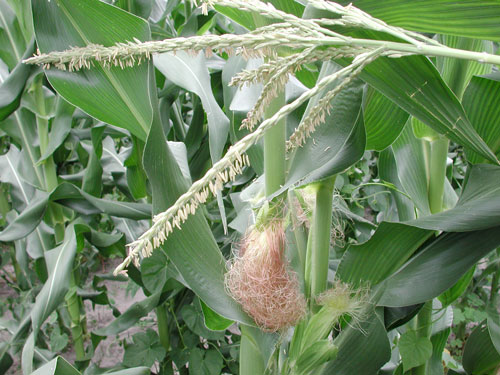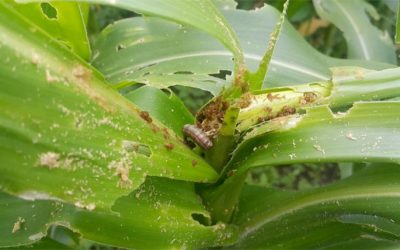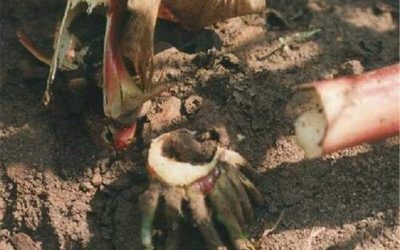Understanding flowering in Maize.

In maize, flowering is identified by the development of tassel (male) and ear (female). Unlike most other field crops, maize is monoecious plant, i.e. two separate flower parts on the same plant.
The role of tassel is to produce enough pollen to fertilize ovules in the female flower or ear. A fully grown healthy tassel can produce between two million to five million pollen grains. For instance, if there are 1000 silks ear, that would be 2000 to 5000 pollen grains produced for fertilizing each ear. Usually, the tip of the tassel can be seen at about the same time that the tip of the emerging ear is visible.
Pollen shedding (from tassel) starts about one or two days before the silks first appear. Pollen shedding continued for several days- about a week with peak production about the third day.
Pollination of a corn plant is a vigorous process and a healthy plant ensures that there is always pollen present for every silk that emerges. Successful pollination results in successful fertilization and optimal kernel development.
Corn Pollination and Weather
Although the process of pollination may seem to be susceptible to weather conditions, most of the time it overcomes adverse situations very well. Pollen does not get easily washed of the tassel because little to no shedding occurs when humidity is excessively high. Pollen that has landed on silk also tend to fend off the weather quite easily because silk surface is sticky and germination takes place immediately after landing of the pollen.
In a growing environment, heat and water stress usually can go hand-in-hand. Stress from water deficit conditions generally have more impact on corn pollination than heat stress. Heat stress may not show until the temperature exceeds 86°F with dry soils or 92°F with adequate soil moisture and high humidity.
Under high temperature conditions, maize plants require more energy to maintain the normal physiological processes.
Stress from high temperature and/or low moisture can cause exposed silks to desiccate and not receive the pollen properly. This can reduce the number of potential kernel per row.
When only high temperature is present, the plant can access water from deeper soil profile, in which case the direct impact of heat will likely be low.
If only water stress is present silk emergence and ear elongation is slower than the rate of pollen shed which affects the number of potential kernel per row. This can result in earl with missing kernels. Prolonged dry conditions can impact the kernel development after pollination as well.


